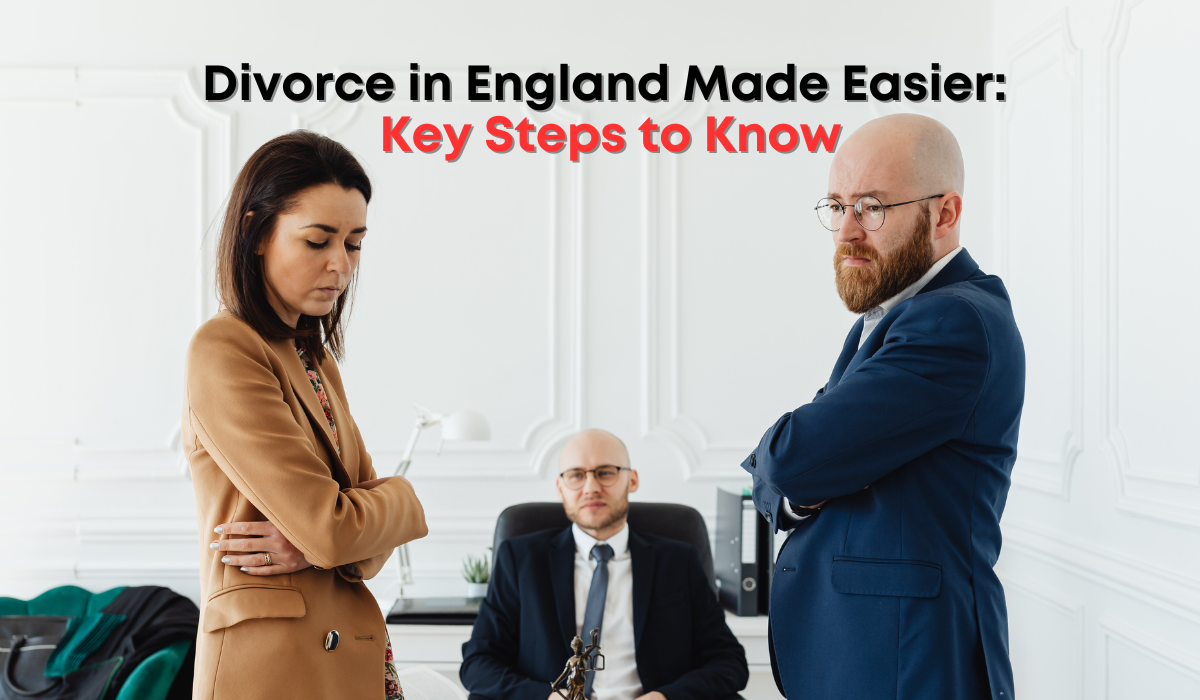Divorce is a pivotal chapter in many lives—a process that not only redefines relationships but also serves as an introduction to family law for countless individuals in England and Wales. While the legal steps may appear daunting at first, the introduction of the no-fault divorce system in 2022 has transformed the landscape, offering a more straightforward and less contentious path for separating couples.
This article delves into the essentials of divorce and civil partnership dissolution, providing a roadmap to help you navigate this significant transition with confidence.
The No-Fault Divorce System: A New Era for Family Law
In 2022, a landmark reform replaced the outdated, blame-centric approach to divorce with a system rooted in simplicity and cooperation. By 2025, the no-fault divorce framework has become a cornerstone of family law, significantly easing the emotional and financial strain of separation.
Key elements include:
- Irretrievable Breakdown: The sole requirement for divorce is a statement from one or both spouses affirming the irretrievable breakdown of the marriage. This eliminates the need to cite blameworthy reasons such as adultery or unreasonable behaviour.
- Joint Applications: Couples can now apply for divorce jointly, fostering a spirit of collaboration and reducing adversarial tensions.
- No Contestation: The right to contest a divorce has been removed, except in exceptional circumstances. This ensures that one party cannot obstruct the process, safeguarding those in abusive or imbalanced relationships.
Eligibility and Jurisdiction
Before applying for a divorce, it’s essential to meet specific conditions:
- Length of Marriage: You must have been married for at least 12 months.
- Jurisdiction: The marriage must be legally recognised under the laws of England and Wales.
- Permanent Breakdown: At least one party must believe the relationship is beyond repair.
For marriages involving international elements, such as overseas weddings or cross-border living arrangements, legal complexities may arise. Consulting a solicitor early is crucial to navigating jurisdictional challenges and ensuring compliance with relevant laws.
The Divorce Process in 2025
While the no-fault system simplifies the legal framework, divorce remains a multi-step process:
- Filing the Application: One or both spouses can initiate the process online or via post, accompanied by a court fee of £593. Fee exemptions are available for low-income applicants.
- Reflection Period: A mandatory 20-week cooling-off period follows the application’s acceptance. This time is intended for reflection and preparation of financial or child arrangements.
- Conditional Order: After the reflection period, applicants may request a Conditional Order—a formal confirmation that the court sees no reason to deny the divorce.
- Final Order: Six weeks after the Conditional Order, the Final Order can be sought, legally ending the marriage.
The entire process typically takes a minimum of six months. However, unresolved financial or child arrangements can extend this timeline.
Financial Arrangements: A Crucial Component
Financial settlements are often the most contentious aspect of divorce. Both parties must disclose their financial circumstances, including assets, debts, income, and pensions. Transparency ensures that settlements are fair and prioritise the wellbeing of any children involved.
- Consent Orders: When couples agree on financial terms, they can formalise the arrangement through a Consent Order, making it legally binding.
- Court Involvement: If disputes arise, the court considers factors such as the marriage’s length, each party’s contributions, and dependents’ needs before determining settlements.
Seeking professional advice is vital during this phase to protect your financial future and ensure the settlement reflects your rights.
Child Arrangements: Prioritising Welfare
For couples with children, their welfare remains paramount. The law encourages parents to collaborate on living and contact arrangements, emphasising joint responsibility post-divorce.
- Child Arrangements Orders: When agreements cannot be reached, the court may issue orders determining living and contact arrangements.
- Child Maintenance: Payments can be agreed privately or calculated via the Child Maintenance Service (CMS). Court involvement in maintenance is limited to high-income earners or international cases.
Alternatives to Court: The Rise of Non-Court Dispute Resolution
In recent years, there has been a shift toward Non-Court Dispute Resolution (NCDR) methods, reducing costs and emotional strain. Options include:
- Mediation: A neutral mediator facilitates discussions to help couples reach fair agreements.
- Collaborative Divorce: Both parties and their lawyers work together to resolve issues without court intervention.
- Arbitration: An arbitrator acts as a private judge, delivering binding decisions outside of court.
These methods are often faster, less adversarial, and better for preserving relationships.
The Risks of DIY Divorce
Although a DIY approach may seem cost-effective, it carries significant risks. Without legal expertise, critical details—such as property division, financial settlements, or child arrangements—can be overlooked, leading to unfair outcomes. A solicitor ensures your rights are upheld and that the process is legally sound.
Emotional and Practical Support
Divorce is more than a legal procedure; it’s an emotional journey. Working with a divorce coach can provide practical and psychological support, offering guidance tailored to your unique situation.
Final Takes: The First Step Toward a New Chapter
Divorce is undeniably challenging, but it also marks the beginning of a new chapter. By understanding your rights, seeking professional advice, and exploring cooperative solutions, you can approach the process with confidence.
If you’re considering divorce or want to learn more, reach out for expert advice tailored to your circumstances. With the right support, you can move forward toward a positive and fulfilling future.
Get in touch: For a comprehensive understanding of your options or queries on UK immigration matters, contact GigaLegal Solicitors at 02074067654 or click here to book a no-obligation consultation with an immigration expert.


